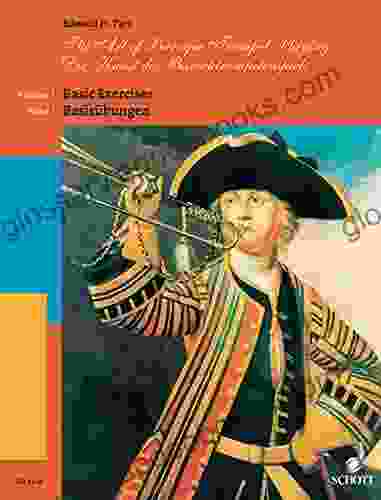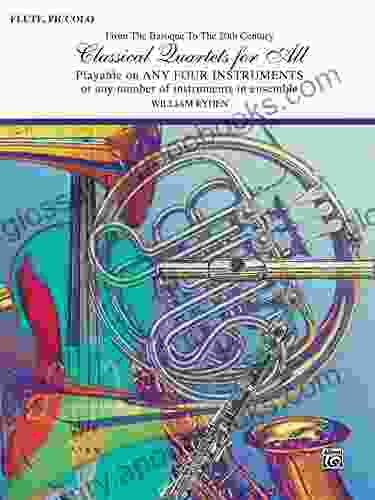The Art of Baroque Trumpet Playing: A Historical and Performance Guide

Step into the enchanting world of Baroque trumpet playing, an art form that has captivated audiences for centuries. This comprehensive guide unravels the rich historical tapestry, unveils the intricate techniques, and guides you through the nuances of performance practice. Through this journey, you'll deepen your understanding of this captivating musical style and elevate your trumpet playing to new heights.
4.9 out of 5
| Language | : | English |
| File size | : | 11074 KB |
| Screen Reader | : | Supported |
| Print length | : | 128 pages |
Historical Context
The Baroque era, spanning from the early 17th to mid-18th century, witnessed a profound transformation in trumpet playing. The development of the natural trumpet, with its limited range of notes, gave rise to a unique repertoire of fanfare-like melodies. Trumpet players became renowned for their virtuosic execution of these elaborate pieces, often performing from atop towers or balconies to project their sound far and wide.
As the Baroque period progressed, the trumpet's role expanded beyond ceremonial functions. Composers such as Johann Sebastian Bach and George Frideric Handel incorporated the trumpet into their orchestral works, exploiting its distinctive timbre and expressive capabilities. This era saw the emergence of the clarino register, a challenging technique that enabled trumpeters to play higher notes with increased agility.
Technical Aspects
Baroque trumpet playing requires a specialized technique to produce the characteristic sound of the natural trumpet. Players must master the art of embouchure formation, tonguing, and ornamentation. Embouchure control is pivotal, as it determines the pitch, tone quality, and projection of the instrument. Trumpet players employ various tonguing techniques, including single and double tonguing, to articulate melodies and create rhythmic nuances.
Ornamentation was an integral part of Baroque trumpet playing, adding embellishments and flourishes to the written music. Trills, turns, and other ornaments were used to enhance the expressiveness and virtuosic nature of the performances.
Performance Practice
The performance of Baroque trumpet music demands an understanding of historical performance practices. This includes the use of period instruments, which differ from modern trumpets in their construction and sound characteristics. Baroque trumpets have a narrower bore and a shallower mouthpiece compared to modern instruments, resulting in a more brilliant and penetrating sound.
Trumpet players must also familiarize themselves with the conventions of Baroque ornamentation and articulation. By incorporating these practices into their playing, they can achieve an authentic and historically informed interpretation of the music.
Repertoire and Notable Players
The Baroque trumpet repertoire encompasses a wide range of musical forms, including concertos, sonatas, and ensemble pieces. Some of the most iconic works include Bach's Brandenburg Concertos, Handel's Water Music, and Vivaldi's Trumpet Concerto in D Major.
Throughout history, numerous trumpet players have left an indelible mark on the Baroque era. Johann Friedrich Fasch, known as the "Father of Trumpet Virtuosi," revolutionized the instrument's technique and extended its range. Other notable players include Gottfried Reiche, Anton Weidinger, and George Hudson, who showcased their virtuosity and shaped the development of Baroque trumpet playing.
The Art of Baroque Trumpet Playing is a testament to the enduring legacy of this captivating musical style. By delving into the historical context, exploring the technical aspects, and mastering the performance practices, trumpet players can unlock the secrets of this enchanting art form. Whether you are a seasoned professional or an aspiring musician, this guide will illuminate your path and inspire you to achieve new heights in your musical journey.
Embrace the Baroque trumpet's brilliance, unleash its expressive power, and join the ranks of those who have dedicated their lives to preserving and perpetuating this timeless art.
4.9 out of 5
| Language | : | English |
| File size | : | 11074 KB |
| Screen Reader | : | Supported |
| Print length | : | 128 pages |
Do you want to contribute by writing guest posts on this blog?
Please contact us and send us a resume of previous articles that you have written.
 Book
Book Novel
Novel Page
Page Chapter
Chapter Text
Text Story
Story Genre
Genre Reader
Reader Library
Library Paperback
Paperback E-book
E-book Magazine
Magazine Newspaper
Newspaper Paragraph
Paragraph Sentence
Sentence Bookmark
Bookmark Shelf
Shelf Glossary
Glossary Bibliography
Bibliography Foreword
Foreword Preface
Preface Synopsis
Synopsis Annotation
Annotation Footnote
Footnote Manuscript
Manuscript Scroll
Scroll Codex
Codex Tome
Tome Bestseller
Bestseller Classics
Classics Library card
Library card Narrative
Narrative Biography
Biography Autobiography
Autobiography Memoir
Memoir Reference
Reference Encyclopedia
Encyclopedia James N Druckman
James N Druckman Mark Gibney
Mark Gibney Kelly Peacock
Kelly Peacock Eileen Culloty
Eileen Culloty Ralph Dolgoff
Ralph Dolgoff Lysander Spooner
Lysander Spooner Deepak Gupta
Deepak Gupta Scott Yenor
Scott Yenor Robert Sprenkle
Robert Sprenkle Faith Gardner
Faith Gardner Derek R Ford
Derek R Ford Dianne Selton
Dianne Selton Denise Kiernan
Denise Kiernan John Bellamy Foster
John Bellamy Foster Robert A Carp
Robert A Carp Monika Gensinger
Monika Gensinger Lincoln Stoller
Lincoln Stoller Dena Harris
Dena Harris S Jayakumar
S Jayakumar Jessica Labar Twomey
Jessica Labar Twomey
Light bulbAdvertise smarter! Our strategic ad space ensures maximum exposure. Reserve your spot today!

 Simon MitchellUnlock Your Knitting Potential: The Ultimate Guide to Stitches, Socks, and...
Simon MitchellUnlock Your Knitting Potential: The Ultimate Guide to Stitches, Socks, and... Herbert CoxFollow ·7.9k
Herbert CoxFollow ·7.9k Cody BlairFollow ·17.6k
Cody BlairFollow ·17.6k Jett PowellFollow ·8k
Jett PowellFollow ·8k Maurice ParkerFollow ·6.3k
Maurice ParkerFollow ·6.3k Cortez ReedFollow ·4.3k
Cortez ReedFollow ·4.3k Stanley BellFollow ·19.5k
Stanley BellFollow ·19.5k David MitchellFollow ·2.5k
David MitchellFollow ·2.5k John Dos PassosFollow ·17.7k
John Dos PassosFollow ·17.7k
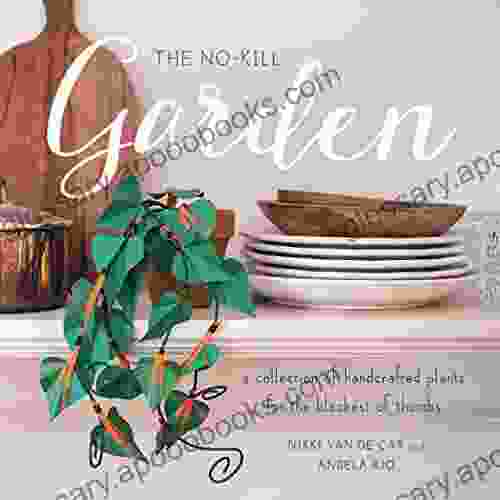
 Clarence Mitchell
Clarence MitchellCollection Of Handcrafted Plants For The Blackest Of...
Do you have a black...
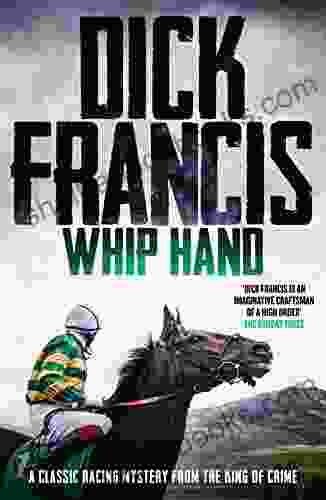
 Edgar Hayes
Edgar HayesClassic Racing Mystery From The King Of Crime
Agatha Christie, the...
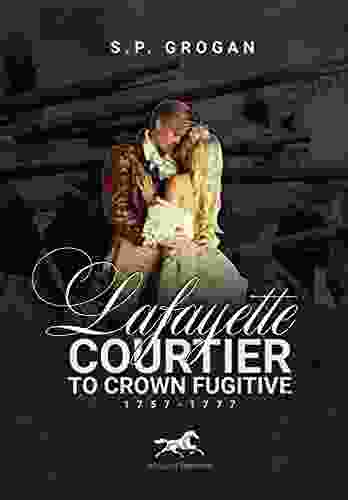
 Demetrius Carter
Demetrius CarterLafayette: Courtier to Crown Fugitive, 1757-1777
The Marquis de...

 Jared Powell
Jared Powell30 Gorgeous Sweaters, Cardigans, Hats, Toys & More:...
Immerse Yourself...
4.9 out of 5
| Language | : | English |
| File size | : | 11074 KB |
| Screen Reader | : | Supported |
| Print length | : | 128 pages |


